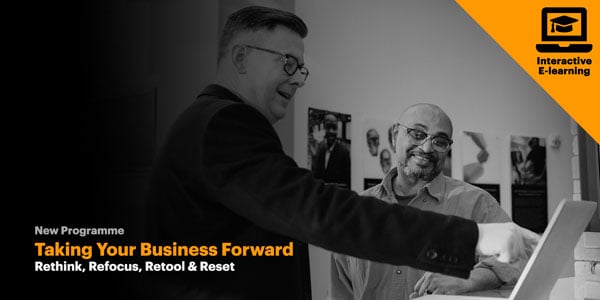Business Reflection: Are You 'Making Progress' or 'Mistaking Motion for Progress'?

Sometimes we get so caught up in running the business day-to-day, it is a challenge to take stock and ask how the business is actually doing. And for that matter, how you are doing as the owner and leader in the business.
We forget that we have to take time to reflect, to question, to work on our business so that we are achieving our goals and heading in the right direction because things are changing so quickly. Don't mistake motion for progress.
This might be a good opportunity to ask yourself the following questions, and we have provided a few simple steps you could take to help you do this.
#1 Given the goals that we set for the business this year, how are we doing? Are we “making progress” or are we “mistaking motion for progress”?
Review the building block of your business: In, The Ten Types of Innovation, Larry Keeley outlines 10 building blocks from which innovation can emerge. These include the profit model, the channel to market, the structure of your business and customer engagement.

Source: Doblin. Click here to explore The Ten Types of Innovation on Doblin's interactive website.
While the book has a focus on innovation, it’s also a very useful framework to use to examine all aspects of the business. Exploring these ten building blocks provides a structured way to examine each part of the business, explore ways to improve the existing business and then reflect on opportunities to grow the business.
Read blog: What Is Sustainable Growth and What Does That Look Like for Your Business?
Knowing the numbers: It’s also essential to look at how you are performing financially. How are things measuring up given the budget that you set for the year? What are the key ratios telling you about business performance?
I know that for some of you numbers will be a strength; for others, there is room for improvement! Regardless of where you fall on the “knowing the numbers” continuum, you do need to spend time on these so that you can honestly answer that question about whether you are making progress. The numbers provide a very important scoreboard for the business that cannot be ignored. And knowing the numbers, you can think more strategically about the next question we suggest you ask yourself.
To learn more about how to improve your business performance and planning, click here
#2 What needs to get done before the year end? More specifically, what are our priorities? And how are our people?
Important/Urgent: Often we spend our time on what is urgent, those things with a deadline looming close, leaving the important things that need to be done to wait until they become urgent. In 7 Habits of Highly Effective People Steven Covey developed the IMPORTANT/URGENT matrix as one way of detailing what you do with your time:

The Important/Urgent matrix by Steven Covey. Source: TaskCracker
Using the analogy of ‘the clock and the compass’, Covey says that the compass provides the ‘true north’ and is based on our vision, direction and overarching goals. These are the reference points when deciding which activities are priorities and therefore most important. Focusing sufficient time on what is important results in better outcomes.
By contrast, if our attention is overly focused on scheduled (‘clock’) tasks and/or immediate episodes or problems, our decision time gets spent on urgent, but not necessarily important, matters. I.e. spend most of your time on the important but not urgent tasks to plan ahead and future-proof your business.
When you spend time on the not important/urgent tasks, you need to ask yourself: if it’s not important to me, why is it on my urgent to do list?
Right people on the bus: It is often said that in business, people are our biggest asset. But they can also be the biggest headache. The right people are our biggest asset and we need them “on the bus” AND sitting in the right seat.
Spending a bit of time looking at the structure of your business and what you do as the leader of your business can pay dividends, both financially as with staff engagement. The culture of your business starts with you. So perhaps ask yourself: Do we have the right people on the bus, sitting in the right seat? And, if I could change one thing to improve the culture of my business, what would it be?
#3 What to do next?
Stop, Start, Keep: One way of setting and reviewing your goals for the remainder of the year, is to ask yourself three questions:
- What do I need to STOP doing?
- What should I START doing?
- What must I KEEP doing?

This simple process allows you to say no to those thinks that are not important, which gives you space to say yes to the things that are. And it is also a reminder keep on doing the things that are working for you and the business.
This blog is written by Chris Woods, Associate Professor, Department of Management, and International Business, The University of Auckland Business School Director. She is also the facilitator of The Icehouse's Improving Business Planning and Performance workshop.


